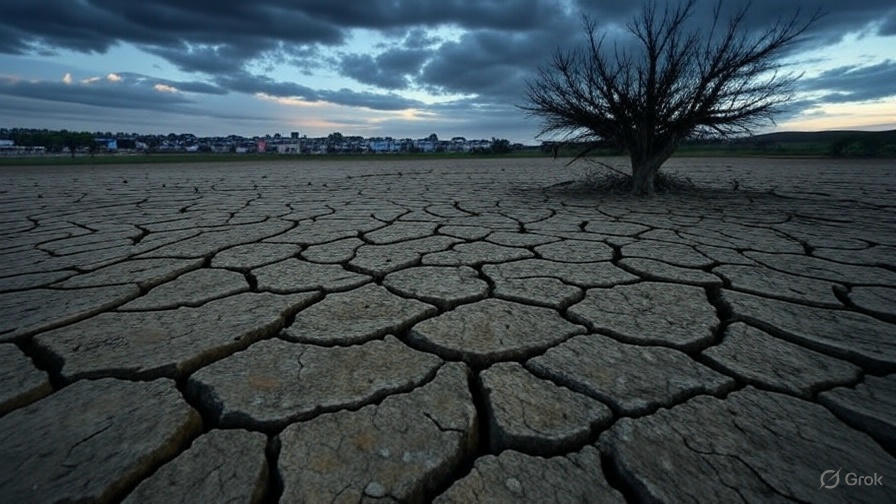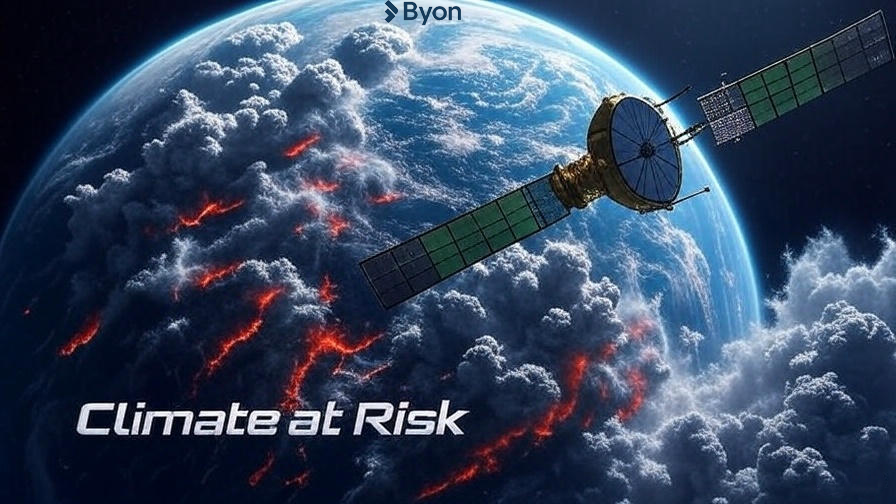Introduction
The title “Scientists Fear Climate Data Gap as Trump Aims at Satellites” highlights a significant concern in the scientific community regarding the potential disruption of climate data collection due to policy changes under the Trump administration. This issue, first prominently discussed during Donald Trump’s initial term (2017–2021), has resurfaced with renewed intensity in 2025 as reports indicate efforts to reduce funding for critical climate-monitoring programs. The potential loss of satellite-based data collection threatens to create gaps in long-term climate records, which are vital for understanding and addressing global warming. This blog explores the implications of these policies, the role of satellites in climate science, and the broader impact on global research efforts, drawing on insights from various sources.
The Role of Satellites in Climate Monitoring
Satellites are indispensable tools for climate science, providing comprehensive data on global phenomena such as sea-level rise, ice-sheet melting, atmospheric composition, and vegetation changes. NASA and the National Oceanic and Atmospheric Administration (NOAA) operate a range of satellites, each designed for specific purposes. NASA’s satellites, like Terra, Aqua, Calipso, and Cloudsat, focus on long-term climate trends, capturing data on ice-sheet thickness, ocean temperatures, and atmospheric particles. NOAA’s satellites, such as those in the Defence Meteorological Satellite Programme (DMSP), primarily support weather forecasting but also contribute to climate datasets by monitoring sea ice and other environmental factors.
One critical mission, the Climate Absolute Radiance and Refractivity Observatory (Clarreo), was designed to calibrate other orbiting instruments, ensuring data continuity across satellite generations. Without such calibration, combining data from different instruments can lead to inaccuracies, rendering years of data unreliable. Dr. Betsy Weatherhead, an environmental monitoring expert, emphasized that “we really are lost if we don’t have good calibration,” highlighting Clarreo’s importance.

Trump Administration’s Policies and Their Impact
During Trump’s first term, proposals to cut funding for NASA’s Earth science division and NOAA’s climate research programs sparked alarm. In 2017, the administration targeted four NASA missions for elimination, including Clarreo, and sought to dismantle NOAA’s climate research arm, the Office of Oceanic and Atmospheric Research (OAR). These moves were seen as ideologically driven, with critics arguing they aimed to suppress climate science.
In 2025, reports indicate an escalation of these efforts. An internal budget document revealed plans to cut NOAA’s OAR funding by $485 million, potentially eliminating all funding for climate, weather, and ocean laboratories. NASA’s Goddard Space Flight Center, a hub for Earth science research, faces potential closure, and missions like the Nancy Grace Roman Space Telescope could be axed. Additionally, the Trump administration has dismissed scientists working on the National Climate Assessment, a congressionally mandated report on climate impacts, raising fears that it may be rewritten to downplay global warming risks.
The administration’s actions extend beyond funding cuts. References to “climate change” have been removed from government websites, and grants for research mentioning the term have been withdrawn unless rephrased. For instance, a Department of Transportation grant was nearly revoked until the word “climate” was removed from its title. Such censorship has created a “climate of fear” among researchers, with some self-censoring to avoid losing funding or jobs.
Consequences of a Climate Data Gap
Continuous data records are crucial for climate models, which rely on consistent, long-term datasets to predict future trends. Gaps in data collection, even for a few months, can significantly reduce model accuracy. For example, missions like Calipso and Cloudsat, which study clouds and atmospheric particles, provide data that improve our understanding of atmospheric dynamics. Dr. Steven Ackerman noted that losing these records would be a “tragedy” for climate science.
The Grace mission, which measures gravity to track mass changes from melting glaciers, exemplifies the challenge. While Grace II was launched in 2018 to replace the original, other missions like Terra and Aqua lack replacements, and their aging satellites are “nursed along” with limited fuel. Without new missions, data gaps could span years, as new satellites take time to develop and deploy.
Globally, the loss of U.S. datasets would have far-reaching impacts. NASA and NOAA data are used by researchers worldwide, and no other agency fully replicates their specialized measurements. While the European Space Agency (ESA) and NOAA’s Suomi NPP satellite offer some alternatives, they lack the precision of NASA’s instruments, reducing the accuracy of global climate models. A Reddit discussion highlighted that even a two-year gap could render models “useless” until data streams resume, potentially delaying critical adaptation research.

Scientists’ Response and Mitigation Efforts
Fearing data loss, scientists have taken proactive measures. In 2016, initiatives like the Azimuth Climate Data Backup Project archived 30 terabytes of federal climate data on independent servers. The Environmental Data and Governance Initiative (EDGI) continues to preserve public datasets, anticipating further suppression. In 2024, EDGI intensified efforts to safeguard data on climate change and green energy, expecting their removal from government websites.
Researchers are also adapting to political pressures. Some have rewritten grant proposals to avoid terms like “climate change,” while others, like Dr. Michael Mann, warn that these actions gaslight the public by obscuring authoritative information. The Union of Concerned Scientists and the American Association for the Advancement of Science have expressed concerns that such censorship could deter young scientists, threatening the future of climate research.
Broader Implications for Science and Society
The Trump administration’s approach reflects a broader skepticism of climate science, with Trump himself calling climate change a “hoax.” This stance, echoed in Project 2025—a conservative policy blueprint—advocates dismantling NOAA and reshaping the U.S. Global Change Research Program. Such policies risk undermining not only climate science but also public health, infrastructure planning, and economic stability, as the National Climate Assessment informs decisions on everything from agriculture to disaster preparedness.
The dismissal of 2,000 scientists, including Nobel laureates, from the National Climate Assessment underscores the scale of the challenge. Their open letter warned that U.S. scientific leadership is being “decimated,” with long-term consequences for innovation and global competitiveness. Meanwhile, state-level actions, like Florida’s ban on climate change references in laws, suggest a coordinated effort to suppress climate science, further complicating adaptation efforts in vulnerable regions.

Conclusion
The fear of a climate data gap under the Trump administration is not merely about losing satellite missions but about the erosion of scientific integrity and public trust. Satellites like Clarreo, Terra, and Aqua are critical for maintaining continuous, accurate climate records, and their potential loss threatens global research efforts. Scientists are responding with resilience, archiving data and advocating for their work, but the broader implications for policy, adaptation, and international collaboration are profound. As Dr. Katharine Hayhoe noted, the National Climate Assessment brings global issues to local contexts, helping communities prepare for worsening climate impacts. Preserving this knowledge is essential for addressing the climate crisis, and the scientific community’s fight to protect it is a testament to its importance.
Call to Action
To support climate science, individuals can advocate for continued funding of NASA and NOAA programs, engage with organizations like EDGI, and stay informed through reliable sources. Policymakers must prioritize evidence-based decision-making to ensure that critical data remains available for future generations.


